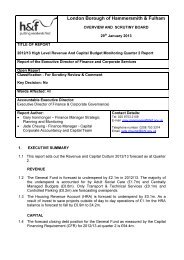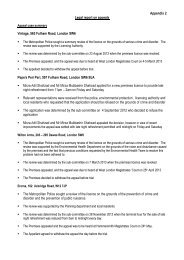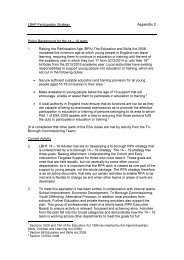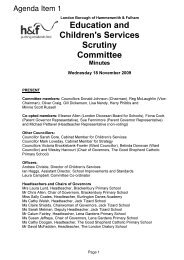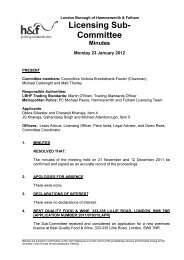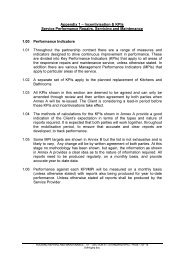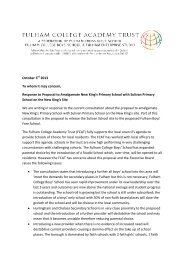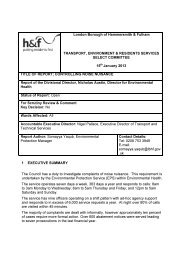DRAFT Pending approval by relevant Health and Wellbeing Boards
DRAFT Pending approval by relevant Health and Wellbeing Boards
DRAFT Pending approval by relevant Health and Wellbeing Boards
Create successful ePaper yourself
Turn your PDF publications into a flip-book with our unique Google optimized e-Paper software.
Employment Support Joint Strategic Needs Assessment<br />
EXECUTIVE SUMMARY<br />
Purpose of this<br />
document<br />
Burden of illness<br />
<strong>and</strong> economic<br />
inactivity<br />
This document reports the needs assessment <strong>and</strong> service mapping of local <strong>and</strong> national<br />
specialist employment support for Tri-borough residents with mental illness, physical<br />
<strong>and</strong> learning disabilities. The report also reviews the evidence of best practice <strong>and</strong><br />
outlines the vision for a new evidence-based service.<br />
Across the Tri-borough area, there are high levels of economic inactivity, particularly in<br />
relation to mental illness <strong>and</strong> physical disabilities.<br />
Nationally, mental health conditions are the most common reason for people to be<br />
dependent on health-related benefits (3). Tri-borough rates of severe mental illness<br />
(SMI) are among the highest in London <strong>and</strong> Engl<strong>and</strong>. Local levels of Incapacity Benefit<br />
(IB) <strong>and</strong> Employment Support Allowance (ESA) claims due to mental ill-health are also<br />
high compared to London, particularly in Hammersmith <strong>and</strong> Fulham (8 th highest in<br />
London). Paid employment rates for clients with severe mental illness in Kensington<br />
<strong>and</strong> Chelsea (K&C) <strong>and</strong> Westminster are below the London <strong>and</strong> Engl<strong>and</strong> averages. This<br />
is despite the fact that nationally up to 90% of all mental health service users want to<br />
work (1) <strong>and</strong> at least a third of those currently unemployed due to SMI would like to find<br />
work (4).<br />
Rates of physical disabilities are also high in parts of the Tri-borough area compared to<br />
London, with large numbers of IB <strong>and</strong> ESA claims for physical ill-health in these areas.<br />
Hammersmith <strong>and</strong> Fulham (H&F) has particularly high levels (12 th highest in London).<br />
The numbers of people with learning disabilities are low in the Tri-borough area <strong>and</strong><br />
employment rates are on a par with London levels. However, clients with learning<br />
disabilities have worse employment prospects than other disability groups. The current<br />
employment rate for disabled people nationally has risen to 48% overall but remains<br />
only 10% for those with learning disabilities (6). We know that 65% of people with<br />
learning disabilities nationally would like a paid job (6).<br />
Sickness absence <strong>and</strong> presenteeism (reduced productivity at work related to ill health)<br />
are also likely to have major impacts in the Tri-borough area, based on what we know<br />
nationally (7). Based on population size, sickness absence is estimated to cost the Triborough<br />
economy £84 million per annum in employer costs, health <strong>and</strong> social care costs<br />
<strong>and</strong> welfare (8). Mental illness is the number one cause of long-term sickness absence,<br />
closely followed <strong>by</strong> musculoskeletal problems (9).<br />
Not all people with severe mental health conditions want to be employed, but almost all want to<br />
‘work’, that is to be engaged in some kind of valued activity that meets the expectations of others.<br />
DWP <strong>and</strong> Department of <strong>Health</strong> joint commissioning guidance 2006 (2)<br />
JSNA<br />
Tri-Borough Joint Strategic Needs Assessment Report 2013 2





